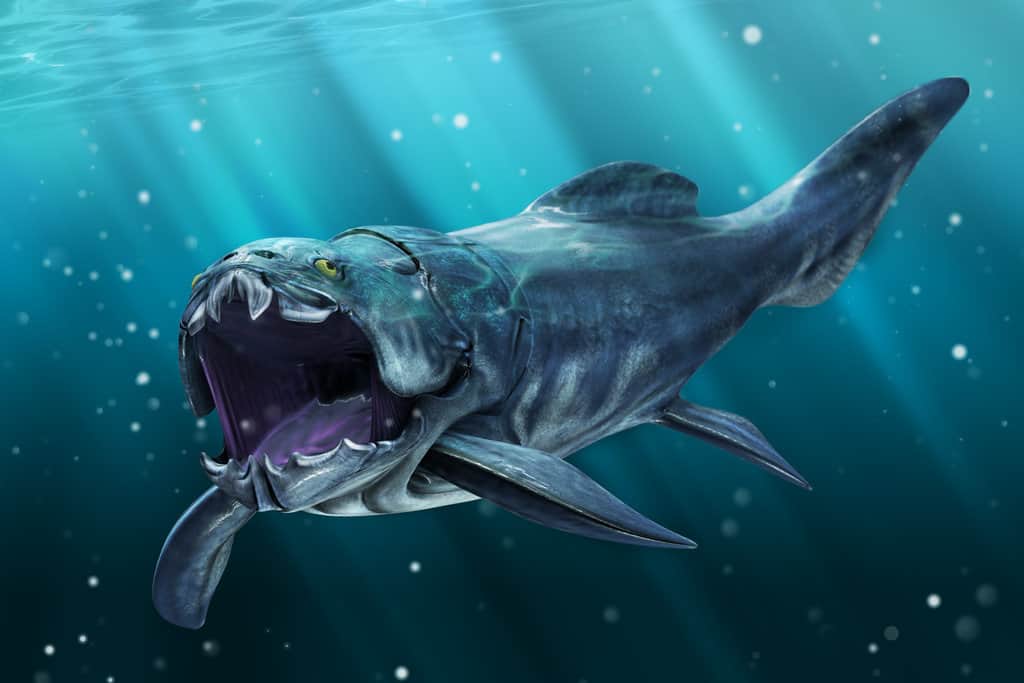🛡️ I, Dunkleosteus: Armored Titan of the Ancient Seas 🌊
🛡️ A follow-up story that branches from the Timeline of Life found in Chapter Life on Earth 🌊✨This story dives into the Devonian Period, known as the “Age of Fishes,” where armored titans like Dunkleosteus ruled the seas. It invites children to wonder about a time long before flowers, birds, or humans—when the world was still green and quiet above, but bursting with invention below the waves. 🌿🦴 As children hear how Dunkleosteus crushed prey with jaw plates instead of teeth, they also begin to explore how evolution tested different survival designs—from heavy outer armor to flexible internal backbones. 🐟💡 This story invites reflection on life’s great transitions: Why did some creatures keep armor, while others grew bendy spines? Why did some disappear, while others crawled onto land? By unrolling the Timeline of Life, children can compare this ancient sea giant with others—like trilobites before, and Ichthyostega after—and begin their own investigations into life’s great inventions. 👣🌍
BIOLOGY STORIES
10/11/20243 min read


I swam through the oceans more than 350 million years ago, when the world was still young, and the sea was bursting with new ideas. My name is Dunkleosteus 👏 Dun 👏 kle 👏 os 👏 te 👏 us 👏—named after David Dunkle who studied ancient armored fish like me.🦈🌍
Back then, during the Devonian Period—known as the Age of Fishes—I was one of the first jawed super-predators.That means I was one of the strongest hunters of my time. Imagine a giant underwater tank—my body was covered in thick bony plates, like a full suit of armor. 🛡️ No soft skin or slippery scales—just strong, hard protection from head to tail!
My head worked like a trapdoor—fast and fierce. And instead of teeth, I had sharp, bony blades that snapped shut with such force I could crush almost anything! 🦴💥 Even the toughest animals in the sea knew to keep their distance.My bite was one of the most powerful bites in the history of life! 🐟⚔️
I could grow as long as a school bus 🚌—that’s up to 30 feet! I zoomed through the ocean, chasing fish and chomping clams.Most animals stayed far away from me, because you see, I was the boss!
🌍 But what was the world like in my time?
There were no flowers, no birds, and no humans yet. 🦕❌🌼 Just giant ferns, mossy ground, and towering plants without blossoms. 🪴🌿 Strange insects were starting to appear. The land was quiet, while the sea was alive with armor-plated fish, early sharks, and coral reefs full of mysterious shapes and jaws. 🐟🌊
Then something new started bubbling in evolution’s imagination…
Some fish began to grow bones inside their bodies—called backbones or vertebrae. 🦴 Brand new invention! These new skeletons made them lighter and more bendy. They could wiggle and twist, dash through the water, and explore new places more easily. ⚡🐠
That changed everything. My heavy armor made me strong—but not flexible. These new fish had found a better way to survive. 💡 Evolution didn’t choose just one winner—it kept trying new things. Some of us had shields, some had spines, some had speed. Nature was experimenting. 🧪🌱
Some of these fish didn’t stay in the sea. They transformed their flippers somehow and started growing legs. Real legs! 🦵🐟 Slowly, carefully, they began crawling onto land for the very first time. Whoa! Life was ready to try breathing air, walking, and leaving the water behind. That’s when the story of creatures like Ichthyostega begins. 👣🦎 But you can find out more for my bendy, leggy friend yourself...
Me? I stayed in the ocean. I ruled for a while. But even the biggest hunters can’t stay forever. As the Earth changed, my kind disappeared. 😔
But I left behind something important—fossils! My bones turned to stone and slept in the Earth for millions of years. 🦴⏳ Now, when you roll out the Timeline of Life, you’ll find me in the Devonian Period, before the land was full of footsteps and flowers, when armor ruled the sea. 🕰️🌊
💭 Imagine what would it feel like to swim in an armored suit? 🤿🛡️
🧐 I wonder… Can you find other animals with armor—past or present? 🐢🦖👣🦎🌊 What kind of creature had both bones and legs and tried walking on land?
I-narrative stories are best told aloud, allowing children to fully engage their imagination and connect deeply with the subject. Sometimes, we use charts or visual aids to spark even more curiosity and understanding. I tailor these stories because of my passion for storytelling and my desire to connect children with the world around them. Through stories, children can explore nature, history, art, biology, music, geometry, language, geography and the wonders of the universe in a way that feels memorable and alive.
With Montessori joy,
Vanina 😊

